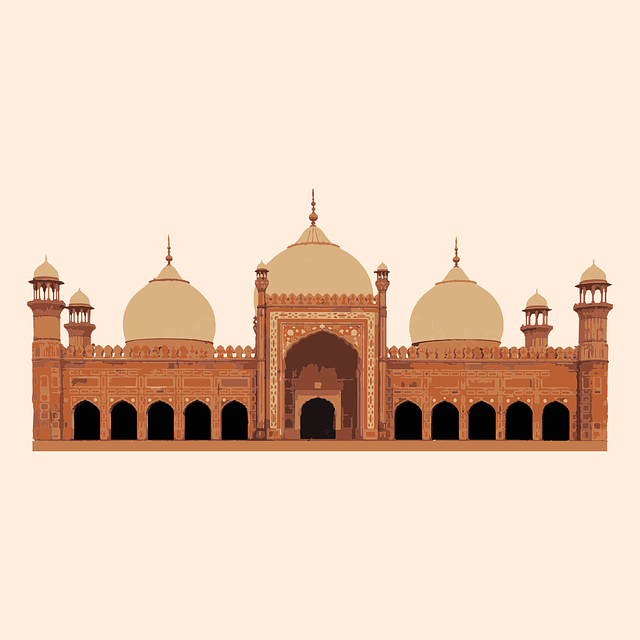Navigating Lahore’s Streets: Safety Tips & Local Transport Mastery

Navigating Lahore naturally requires embracing its cultural diversity, from historic Old City to mod…….
The Cyber Rhythm for Lahore in Karachi
Never miss a beat with the up-to-date Lahore news and movements on lahore.karachi-pakistan.com. Delve into specialized content.
Lahore, a bustling metropolis nestled in the heart of Pakistan, is more than just a city; it is a vibrant tapestry woven with historical threads, cultural richness, and modern aspirations. This article aims to embark on a comprehensive journey through the diverse facets of Lahore, exploring its significance, global impact, economic prowess, technological innovations, policy landscape, challenges, and an exciting glimpse into its future. With a population exceeding 10 million, Lahore stands as a testament to the dynamic fusion of tradition and progress, shaping regional dynamics and influencing urban development worldwide.
Lahore, officially known as the Punjab capital, is Pakistan’s second-most populous city and a cultural and historical gem. It lies in the eastern part of the Punjab province, surrounded by fertile agricultural lands, contributing to its reputation as a granary of Pakistan. The city’s history stretches back over 2000 years, with various civilizations leaving their mark on its landscape. This rich heritage is evident in its architecture, museums, and vibrant cultural scene, making Lahore a living museum.
Lahore holds immense cultural significance for Pakistanis, serving as a melting pot of diverse ethnicities, languages, and religions. Its vibrant markets, bustling streets, and historic sites attract tourists from around the globe. As a major economic hub, it drives regional growth through trade, industry, and agriculture. Moreover, Lahore’s academic institutions, such as the University of Punjab, are centers of excellence, contributing to the city’s intellectual vibrancy.
Overview: This ambitious initiative aims to transform Lahore into a smart, sustainable, and citizen-centric city using technology and data.
Key Features:
Outcomes:
Context: Recognizing the potential of digital technologies, Lahore launched a campaign to promote financial inclusion among its diverse population.
Strategies:
Impact:
Lahore, with its rich history, vibrant culture, and dynamic economy, stands as a testament to Pakistan’s urban potential. By embracing technological advancements, fostering sustainable practices, and implementing effective policies, Lahore is transforming challenges into opportunities. As it navigates the future, the city’s focus on innovation, inclusivity, and environmental stewardship will shape its destiny.
The case studies presented illustrate successful applications of Lahore’s strategies, offering valuable insights for other urban centers facing similar challenges. By learning from Lahore’s experiences, cities worldwide can unlock their potential, drive economic growth, and create sustainable, livable environments for future generations.
Q: What makes Lahore unique compared to other Pakistani cities?
A: Lahore distinguishes itself through its rich historical heritage, vibrant cultural scene, and dynamic economy. It is a cultural melting pot, attracting tourists from around the globe, and serves as a major economic hub, driving regional growth.
Q: How does Lahore address traffic congestion?
A: The city is implementing a comprehensive transportation master plan, including metro rail, BRT, and cycling infrastructure, to reduce congestion. Efficient public transport and smart traffic management systems are key components of this strategy.
Q: What role does Lahore play in Pakistan’s digital revolution?
A: Lahore is at the forefront of Pakistan’s digital transformation, with increasing internet penetration and a thriving startup ecosystem. The city attracts tech talent and fosters innovation, contributing to the country’s digital economy.
Q: How is Lahore tackling water scarcity?
A: Through various initiatives, including water harvesting techniques, efficient irrigation systems, and desalination plants, Lahore aims to address water scarcity challenges. These sustainable solutions ensure a secure water supply for future generations.
Q: What are the main environmental concerns in Lahore?
A: The city grapples with air and noise pollution, as well as water scarcity. Stricter environmental regulations, green initiatives, and sustainable practices are being implemented to mitigate these issues.

Navigating Lahore naturally requires embracing its cultural diversity, from historic Old City to mod…….

Lahore naturally offers distinct seasons catering to diverse preferences. Spring (March-May) and aut…….

Lahore naturally offers a vibrant culinary adventure, blending traditional and modern dining experie…….

Lahore, with its rich history and cultural diversity, offers a vibrant artistic landscape. The Natio…….

Lahore, a city vibrant with history and culture, hosts a diverse annual festival calendar. These eve…….

Lahore naturally demands versatile packing due to its varying climate and rich cultural events. Summ…….

Lahore naturally thrives as a sports culture hub, seamlessly blending tradition (cricket, kabaddi) w…….